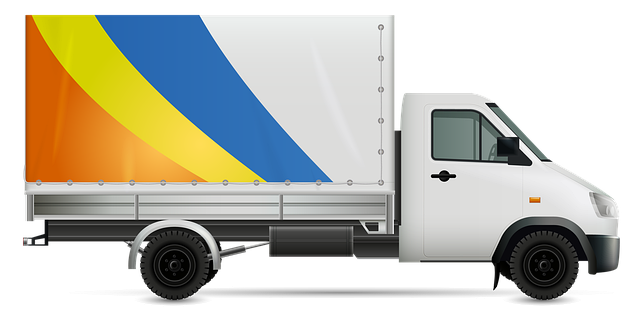Looking to register your car in California? This comprehensive guide breaks down the process step-by-step, from understanding key requirements to securing your license plate. First, familiarize yourself with California’s car registration mandates, including necessary documents like the vehicle’s VIN (verified using a VIN verifier). Then, gather these essentials and visit your local DMV office. Fill out the application form, pay the fees, and voilà—you’ll be cruising California highways in no time!
- Understand California Car Registration Requirements
- Gather Necessary Documents for Car Registration
- Visit Your Local California Department of Motor Vehicles (DMV) Office
- Complete the Car Registration Application Form
- Pay the Required Registration Fees and Get Your License Plate
Understand California Car Registration Requirements

Before diving into the registration process, it’s crucial to understand California’s car registration requirements. These regulations are designed to ensure road safety and maintain accurate vehicle records. One key aspect is the need for a Vehicle Identification Number (VIN) verifier or what many now refer to as a mobile VIN verification service. This step involves confirming that your vehicle’s VIN is legitimate and matches the data in the manufacturer’s records.
In California, this process can often be completed through a mobile VIN inspection or verification service, making it more convenient for car owners. These services utilize advanced technology to cross-reference your vehicle’s details against state databases, ensuring compliance before you submit your registration application. This approach streamlines the registration process and helps prevent potential issues related to fraud or inaccurate information.
Gather Necessary Documents for Car Registration

Before you start the registration process, ensure you have all the required documents. One crucial tool to aid in this is a VIN verifier, which can be used to quickly and accurately check your vehicle’s history. This includes details about its previous owners, maintenance records, and any reported accidents or damage. Along with verifying the Vehicle Identification Number (VIN), you’ll need to gather essential papers like proof of ownership (or a bill of sale), current registration (if applicable), and valid identification documents for all drivers who will be listed on the registration.
Additionally, if you’re conducting a mobile VIN inspection or using a mobile vin verifier, make sure these services are trusted and certified to ensure you receive accurate information. This step is vital as it helps avoid any potential issues during the registration process and ensures your vehicle’s history is up-to-date and transparent.
Visit Your Local California Department of Motor Vehicles (DMV) Office

To begin the process of registering your car in California, start by visiting your local California Department of Motor Vehicles (DMV) Office. This is a crucial step as it provides you with the necessary resources and expertise to ensure a smooth registration experience. At the DMV, you’ll have access to tools and staff who can guide you through the requirements, including the essential Vehicle Identification Number (VIN) inspection.
A VIN verifier, whether used in-person at a DMV or via a mobile vin verification service, plays a vital role in this process. It allows officials to cross-reference your vehicle’s unique VIN with their records, ensuring its authenticity and history. By utilizing these services, you can streamline the registration and gain peace of mind knowing that all checks have been carried out.
Complete the Car Registration Application Form

To begin the registration process, you’ll need to complete the Car Registration Application Form provided by the California Department of Motor Vehicles (DMV). This form requires detailed information about your vehicle, including its make, model, year, and unique Vehicle Identification Number (VIN). A VIN verifier, often available through a mobile vin verification service, can be incredibly helpful during this step. By using a mobile vin inspection tool, you can quickly cross-reference the provided VIN with official databases to ensure accuracy.
Make sure all the details are correct, as any errors or discrepancies could lead to delays in processing your registration. The form also requires personal information about the owner, including proof of identity and residency. Once this section is completed, you’ll be one step closer to registering your vehicle smoothly and efficiently in California.
Pay the Required Registration Fees and Get Your License Plate

After completing your vehicle’s registration application, it’s time to settle the fees. California charges a base fee for car registration, with additional costs based on factors like the age and type of your vehicle. You can typically pay online or at a local DMV office. Once the payment is processed, you’ll receive an acknowledgment and can proceed to obtain your license plate.
Obtaining license plates involves providing proof of insurance, passing a vin inspection (using either a mobile vin verification service or visiting a designated location), and ensuring your vehicle complies with all necessary safety standards. A valid, clearly displayed license plate is crucial for legally operating your car on California’s roads, so make sure to follow these steps promptly.
Registering a car in California involves understanding the state’s requirements, gathering essential documents, visiting your local DMV office, completing an application form, and paying registration fees. By following these straightforward steps and utilizing tools like a VIN verifier, you can ensure a smooth process. Remember to keep your registration up-to-date for legal compliance and convenience.
